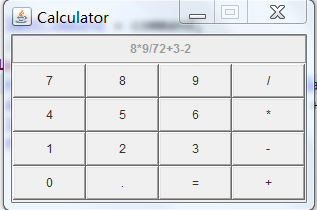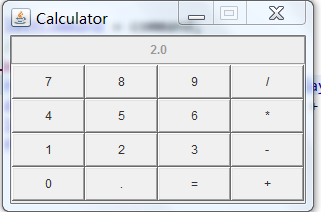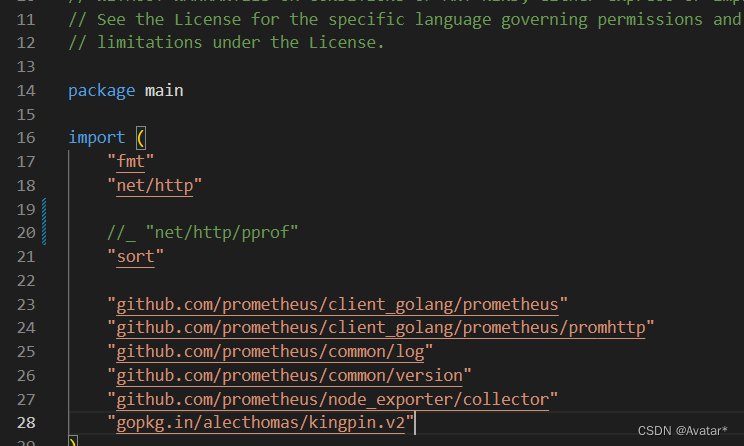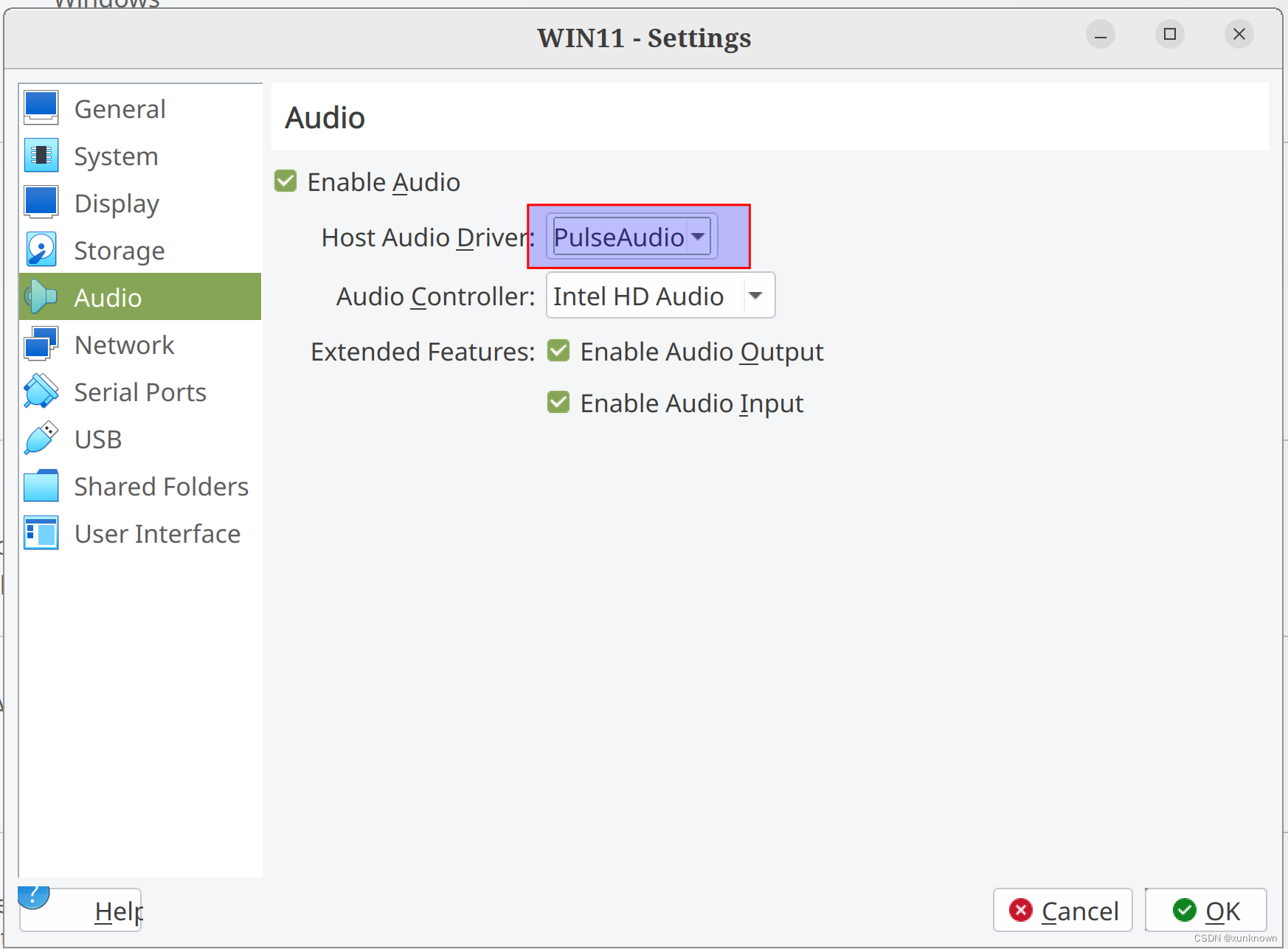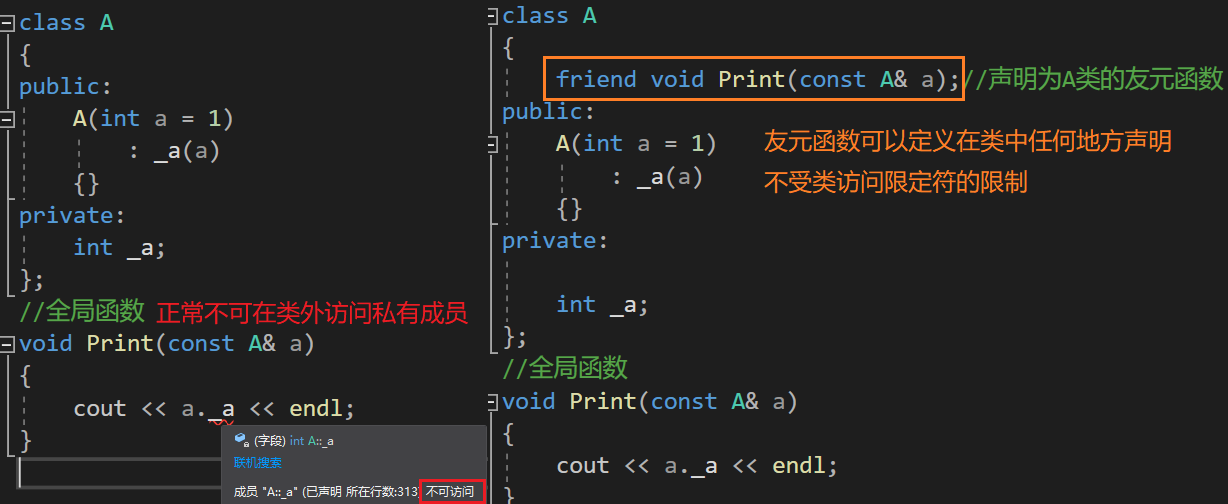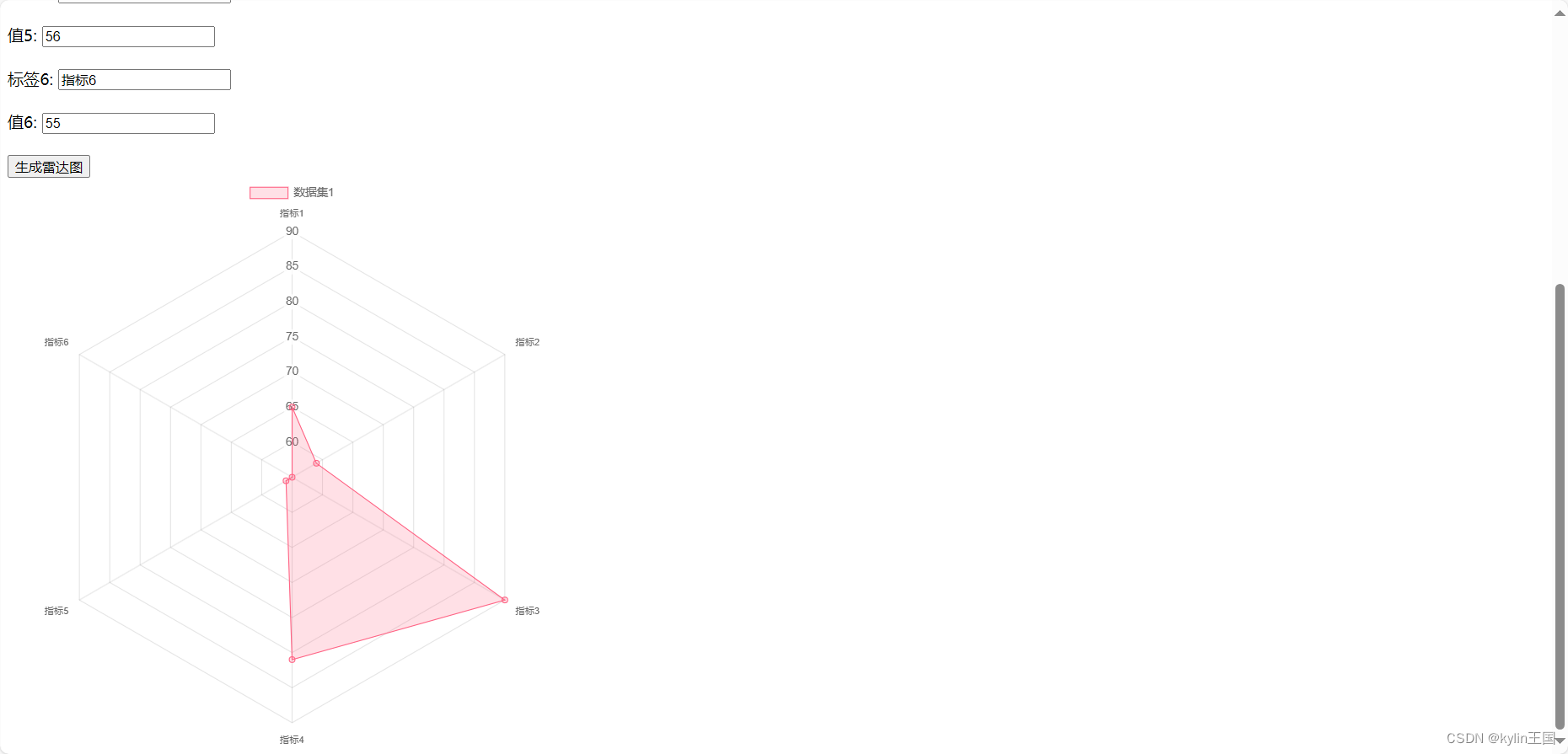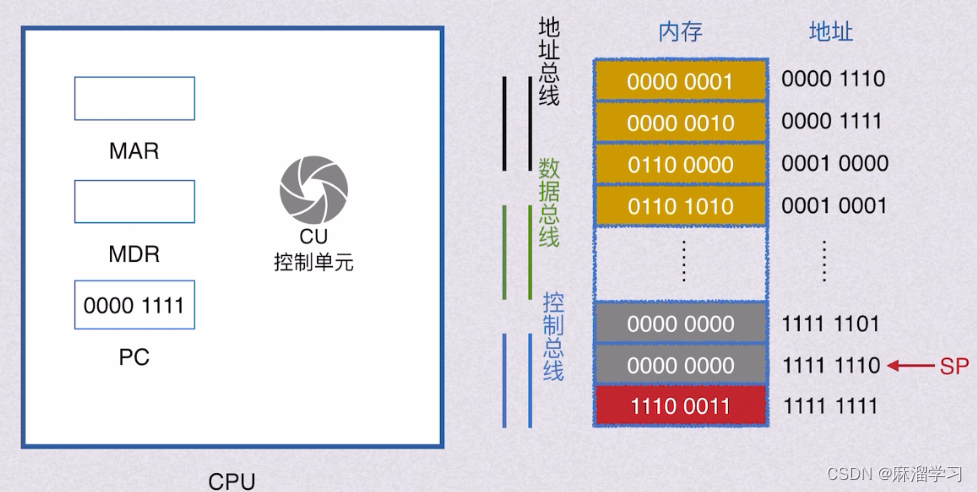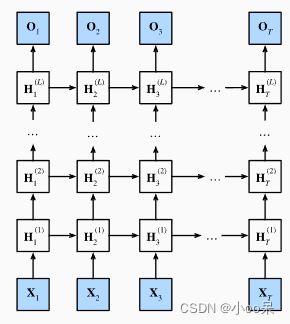1. 排序算法
1.1 快速排序算法
public abstract class Sort<T extends Comparable<T>> {
public abstract void sort(T[] array);
protected boolean less(T first, T two) {
return first.compareTo(two) < 0;
}
protected void swap(T[] array, int i, int j) {
T temp = array[i];
array[i] = array[j];
array[j] = temp;
}
}
/**
* 快速排序
*
* 快速排序通过一个切分元素将数组分为左右两个数组,
* 左数组元素小于等于切分元素,右数组大于等于切分元素,
* 将左右子数组排序,整个数组也就有序了
*
* 平均情况为O(nlog(n)),最差情况O(n~2),存储空间O(log(n))
* V1.1.0 sort、partition写法参照<<程序员面试金典>>重写
*
*/
public class QuitSort<T extends Comparable<T>> extends Sort<T> {
@Override
public void sort(@NotNull T[] arr) {
shuffle(arr);
sort(arr, 0 , arr.length - 1);
}
private void sort(T[] arr, int left, int right) {
int index = partition(arr, left, right);
if (left < index - 1) { // 排序左半部分
sort(arr, left, index - 1);
}
if (index < right) { // 排序右半部分
sort(arr, index, right);
}
}
private int partition(T[] arr, int left, int right) {
T pivot = arr[(left + right) / 2]; // 挑选一个基准点
while (left <= right) {
// 找到左边应被放到右边的元素
while (arr[left].compareTo(pivot) < 0) {
left++;
}
// 找到右边应被放到左边的元素
while (arr[right].compareTo(pivot) > 0) {
right--;
}
if (left <= right) {
swap(arr, left, right); // 交换元素
left++;
right--;
}
}
return left;
}
private void shuffle(T[] arr) {
List<Comparable> list = Arrays.asList(arr);
Collections.shuffle(list); // 防止最坏的情况,第一次从最小的元素切分,第二次从次小的元素切分。时间复杂度N^2
list.toArray(arr);
}
public static void main(String[] args) {
Sort sort = new QuitSort();
Integer[] arr = new Integer[]{2, 1, 4, 6, 3, 7, 3};
sort.sort(arr);
System.out.println(Arrays.asList(arr));
}
}
1.2 归并排序
/**
* 归并排序
*
* @author Jian Shen
* @version V1.0.0
* @date 2019/7/21
*/
public abstract class MergeSort<T extends Comparable<T>> extends Sort<T> {
protected T[] assist; // 辅助数组
/**
* 将数组中已经排好序的两个部分[左侧部分、右侧部分]合并
*
* @param array
* @param left
* @param middle
* @param right
*/
protected void merge(@NotNull T[] array, int left, int middle, int right) {
int i = left;
int j = middle + 1;
for (int k = left; k <= right; k++) {
assist[k] = array[k];
}
for (int k = left; k <= right; k++) {
if (i > middle) { // 说明左侧部分已经完成合并,仅需合并右侧部分
array[k] = assist[j++];
} else if (j > right) { // 说明右侧部分已经完成合并,仅需合并左侧部分
array[k] = assist[i++];
} else if (assist[i].compareTo(assist[j]) <= 0) {
array[k] = assist[i++];
} else {
array[k] = assist[j++];
}
}
}
}
/**
* 自顶向下归并排序
*
* 将数组分成两个部分,分别进行排序,然后归并起来
* 这种对半分的复杂度为O(NlogN)
*
* @author Jian Shen
* @version V1.0.0
* @date 2019/7/21
*/
public class Up2DownMergeSort<T extends Comparable<T>> extends MergeSort<T> {
@Override
public void sort(T[] array) {
assist = (T[]) new Comparable[array.length];
sort(array, 0, array.length - 1);
}
private void sort(T[] array, int left, int right) {
if (left >= right) {
return ;
}
int middle = left + (right - left) / 2;
sort(array, left, middle);
sort(array, middle + 1, right);
merge(array, left, middle, right);
}
public static void main(String[] args) {
Sort sort = new Up2DownMergeSort();
Integer[] array = new Integer[]{1, 3, 2, 4, 4, 9, 10, 3, 3};
sort.sort(array);
System.out.println(Arrays.asList(array));
}
}
1.3 插入排序
/**
* 插入排序
*
* 每次将当前元素插入到左侧已经排序的数组中,插入之后左侧数组依然有序。
* 对于数组 {3, 5, 2, 4, 1},它具有以下逆序:(3, 2), (3, 1), (5, 2), (5, 4), (5, 1), (2, 1), (4, 1),
* 插入排序每次只能交换相邻元素,令逆序数量减少 1,因此插入排序需要交换的次数为逆序数量
*
* @author Jian Shen
* @version V1.0.0
* @date 2019/7/20
*/
public class InsertSort<T extends Comparable<T>> extends Sort<T> {
@Override
public void sort(T[] array) {
int length = array.length;
for (int i = 1; i < length; i++) {
for (int j = i; j > 0; j--) {
if (less(array[j], array[j - 1])) {
swap(array, j, j -1);
}
}
}
}
public static void main(String[] args) {
Sort sort = new InsertSort();
Integer[] array = new Integer[]{3, 5, 2, 4, 1, 1};
sort.sort(array);
System.out.println(Arrays.asList(array));
}
}
1.4 冒泡排序
/**
* 冒泡排序
*
* 从左到右不断交换相邻逆序的元素,在一轮循环后,可以让未排序的最大元素上浮至最右侧
* 在一轮循环中,如果没有发生交换,则说明此时数组已经有序,可以直接退出
*
* @author Jian Shen
* @version V1.0.0
* @date 2019/7/20
*/
public class BubbleSort<T extends Comparable<T>> extends Sort<T> {
@Override
public void sort(@NotNull T[] array) {
int length = array.length;
boolean sorted = false;
for (int i = length - 1; i > 0 && !sorted; i--) {
sorted = true;
for (int j = 0; j < i; j++) {
if (less(array[j + 1], array[j])) {
sorted = false;
swap(array, j, j + 1);
}
}
}
}
public static void main(String[] args) {
Sort sort = new BubbleSort();
Integer[] array = new Integer[]{1, 3, 2, 4, 4, 9, 10, 3};
sort.sort(array);
System.out.println(Arrays.asList(array));
}
}
1.5 希尔排序
/**
* 希尔排序
*
* 对于大规模的数组,插入排序很慢,因为每次只能将逆序数量减1,
* 希尔排序交换不相邻的元素,每次可以将逆序数量减少大于1
* 希尔排序使用插入排序对间隔h的序列进行排序,通过不断减小h至1,就可以使得数组是有序的
*
* @author Jian Shen
* @version V1.0.0
* @date 2019/7/21
*/
public class ShellSort<T extends Comparable<T>> extends Sort<T> {
@Override
public void sort(@NotNull T[] array) {
int length = array.length;
int h = 1;
while (h < length / 3) {
h = 3 * h + 1;
}
while (h >= 1) {
for (int i = h; i < length; i++) {
for (int j = i; j >= h; j -= h) {
if (less(array[j], array[j - h])) {
swap(array, j, j - h);
}
}
}
h /= 3;
}
}
public static void main(String[] args) {
Sort sort = new ShellSort();
Integer[] array = new Integer[]{3, 5, 3, 4, 1, 1};
sort.sort(array);
System.out.println(Arrays.asList(array));
}
}
1.6 直接插入排序
public class InsertSort{
public static void insertSort(int[] array){//直接插入排序
for(int i=1;i<array.length;i++){
if(array[i]<array[i-1]){
int temp=array[i];
int k=i-1;
for(int j=k;temp<array[j] && j>=0;j--){
array[j+1]=array[j];
k--;
}
array[k+1]=temp;
}
}
}
public static void printArray(int[] array) {//打印
for(int i=0;i<array.length;i++){
System.out.print(array[i]);
if(i!=array.length-1){
System.out.print(" ");
}
}
}
public static void main(String[] args) {
//{05, 56, 13, 88,19, 37, 64,75,80, 21,92}(用数组存放)
int[] a={05, 56, 13, 88,19, 37, 64,75,80, 21,92};
System.out.println("排序前的序列:");
printArray(a);
insertSort(a);
System.out.println("\n排序后的序列:");
printArray(a);
}
}
2. 当月日历打印
import java.util.*;
public class CalendarStudy {
public static void main(String[] args) {
printCurrentMonthCalendar();
}
private static void printCurrentMonthCalendar() {
/* 1.获取当前日期 月与日信息
* 2.获取当前月 第一天信息(如第一天为星期几)
* 3.循环开始打印,格式控制,结束条件日期不为当前月
*/
Calendar date = new GregorianCalendar();
int nowMonth = date.get(Calendar.MONTH);
int nowDay = date.get(Calendar.DAY_OF_MONTH);
date.set(Calendar.DAY_OF_MONTH, 1);
int firstWeekday = date.get(Calendar.DAY_OF_WEEK); // 当前月第一天为星期几
System.out.println("星期日 星期一 星期二 星期三 星期四 星期五 星期六");
for (int i = Calendar.SUNDAY; i < firstWeekday; i++) {
System.out.printf("%7s", " ");
}
while (date.get(Calendar.MONTH) == nowMonth) {
int day = date.get(Calendar.DAY_OF_MONTH);
int weekDay = date.get(Calendar.DAY_OF_WEEK);
System.out.printf("%6d", day);
if (day != nowDay) {
System.out.print(" ");
} else {
System.out.print("*");
}
if (weekDay == Calendar.SATURDAY) {
System.out.println();
}
date.add(Calendar.DAY_OF_MONTH, 1);
}
}
}
3. 简单计算器实现
基本思路:边输入边计算,最后显示
import java.awt.BorderLayout;
import java.awt.Button;
import java.awt.GridLayout;
import java.awt.event.ActionEvent;
import java.awt.event.ActionListener;
import javafx.scene.layout.Border;
import javax.swing.JButton;
import javax.swing.JFrame;
import javax.swing.JPanel;
public class Calculator extends JFrame {
private boolean start, flag;
private String lastCommand;
private double result1, result2;
private int count=1;
JButton display;
JPanel panel;
public Calculator() {
setLayout(new BorderLayout());
result1 = 0;
result2 = 0;
start = true;
flag = false;
lastCommand = "=";
display = new JButton(" ");
display.setEnabled(false);
add(display, BorderLayout.NORTH);
ActionListener insert = new InsertAction();
ActionListener command = new CommandListener();
panel = new JPanel(new GridLayout(4, 4));
addButton("7", insert);
addButton("8", insert);
addButton("9", insert);
addButton("/", command);
addButton("4", insert);
addButton("5", insert);
addButton("6", insert);
addButton("*", command);
addButton("1", insert);
addButton("2", insert);
addButton("3", insert);
addButton("-", command);
addButton("0", insert);
addButton(".", insert);
addButton("=", command);
addButton("+", command);
add(panel, BorderLayout.CENTER);
pack();
setTitle("Calculator");
setResizable(false);
setSize(300, 200);
setLocation(400, 400);
setVisible(true);
setDefaultCloseOperation(this.EXIT_ON_CLOSE);
}
private void addButton(String label, ActionListener listener) {
Button button = new Button(label);
button.addActionListener(listener);
panel.add(button);
}
private class InsertAction implements ActionListener {// 监听数字按钮
public void actionPerformed(ActionEvent e) {
String input = e.getActionCommand();
display.setText(display.getText() + input);
}
}
private class CommandListener implements ActionListener {// 监听命令按钮
public void actionPerformed(ActionEvent e) {
String command = e.getActionCommand();
if (flag) {
String[] s;
s = display.getText().split("\\" + lastCommand);
result2 = Double.parseDouble(s[s.length-1]);
System.out.println(result2);
calculator();
if (command.equals("="))
display.setText("" + result1);
else
display.setText(display.getText() + command);
lastCommand = command;
//flag = false;
} else {
result1 = Double.parseDouble(display.getText());
display.setText(display.getText() + command);
lastCommand = command;
flag = true;
}
}
}
public void calculator() {// 进行计算的函数
if (lastCommand.equals("+")) {
result1 += result2;
} else if (lastCommand.equals("-")) {
result1 -= result2;
} else if (lastCommand.equals("*")) {
result1 *= result2;
} else if (lastCommand.equals("/")) {
result1 /= result2;
} else if (lastCommand.equals("=")) {
result1 = result2;
}
}
public static void main(String[] args) {
new Calculator();
}
}
4. 拉格朗日乘数法在原材料选择问题上的具体应用
问题需求:
输入待制作的材料:(材料长,材料数量)
分别为(5401,124)、(200,135)、(1350,45),
输入原材料长度最大值6500,最小值3500,浮动间隙10(即步长),可选种类3
求需要多少原材料,数量分别为多少
备注:原材料可以分割也可以合并,可以想象为黄金
求解:这是一个带有约束条件的拉格朗日乘数法求解最优值的问题,我们直接上代码
from scipy.optimize import minimize
import numpy as np
# 由于x[0]*x[1]+(x[0]+10)*x[2]+(x[0]+20)*x[3])是凸函数,所以必定存在全局最优,证明略
from scipy.optimize import minimize
import numpy as np
fun = lambda x: (x[0])
# 限制条件 eq等于 ineq大于等于
cons = ({'type': 'eq', 'fun': lambda x: (x[0]*x[1]+(x[0]+10)*x[2]+(x[0]+20)*x[3]) - (5401*124+200*135+1350*45)},
{'type': 'ineq', 'fun': lambda x: (x[0] - 3500)},
{'type': 'ineq', 'fun': lambda x: (6500 - (x[0]+20))},
{'type': 'ineq', 'fun': lambda x: (x[1] - 1)},
{'type': 'ineq', 'fun': lambda x: (x[2] - 1)},
{'type': 'ineq','fun': lambda x: (x[3] - 1)})
# 代表四个变量的初始值
x0 = np.array((6500, 1, 1, 1)) # 设置初始值
# 限制变量范围
bounds = ((3500,6500),(1,None),(1,None),(1,None))
res = minimize(fun, x0, method='SLSQP', constraints=cons, bounds=bounds)
print('最大值:',res.fun)
print('最优解:',res.x)
print('迭代终止是否成功:', res.success)
print('迭代终止原因:', res.message)
最大值: 3500.0
最优解: [3500. 71.82289948 71.93464057 72.04638166]
迭代终止是否成功: True
迭代终止原因: Optimization terminated successfully
total_info = (5401*124+200*135+1350*45)
x = round(res.fun, 0)
now_info = x * int(res.x[1]) + (x+10)*int(res.x[2]) + (x+20) * int(res.x[3])
need_other = total_info - now_info
p_num = int(res.x[1])
q_num = int(res.x[2])
z_num = int(res.x[3])
# 由于int取整并且步长远小于原材料长度
# 所以可直接从最小向上依次选
if x >= need_other:
p_num += 1
elif x + (x + 10) >= need_other:
p_num += 1
q_num += 1
elif x + (x + 10) + (x + 20) >= need_other:
p_num += 1
q_num += 1
z_num += 1
print(str(int(x)) + ' ' + str(p_num))
print(str(int(x+10)) + ' ' + str(q_num))
print(str(int(x+20)) + ' ' + str(z_num))
print('多买的原材料长度' + " " + str(int((x * p_num + (x+10) * q_num + (x+20) * z_num) - total_info)))
3500 72
3510 72
3520 72
多买的原材料长度 686
5. 最小生成树之安慰奶牛
问题描述
Farmer John变得非常懒,他不想再继续维护供奶牛之间供通行的道路。道路被用来连接N个牧场,牧场被连续地编号为1到N。每一个牧场都是一个奶牛的家。FJ计划除去P条道路中尽可能多的道路,但是还要保持牧场之间 的连通性。你首先要决定那些道路是需要保留的N-1条道路。第j条双向道路连接了牧场Sj和Ej(1 <= Sj <= N; 1 <= Ej <= N; Sj != Ej),而且走完它需要Lj的时间。没有两个牧场是被一条以上的道路所连接。奶牛们非常伤心,因为她们的交通系统被削减了。你需要到每一个奶牛的住处去安慰她们。每次你到达第i个牧场的时候(即使你已经到过),你必须花去Ci的时间和奶牛交谈。你每个晚上都会在同一个牧场(这是供你选择的)过夜,直到奶牛们都从悲伤中缓过神来。在早上 起来和晚上回去睡觉的时候,你都需要和在你睡觉的牧场的奶牛交谈一次。这样你才能完成你的 交谈任务。假设Farmer John采纳了你的建议,请计算出使所有奶牛都被安慰的最少时间。
输入格式
第1行包含两个整数N和P。
接下来N行,每行包含一个整数Ci。
接下来P行,每行包含三个整数Sj, Ej和Lj。
输出格式
输出一个整数, 所需要的总时间(包含和在你所在的牧场的奶牛的两次谈话时间)
样例输入
5 6
10
10
20
6
30
1 2 5
2 3 5
2 4 12
3 4 17
2 5 15
3 5 6
样例输出
178
数据规模与约定
5 <= N <= 10000,N-1 <= P <= 100000,0 <= Lj <= 1000,1 <= Ci <= 1,000
5.1 代码
import java.util.PriorityQueue;
import java.util.Scanner;
public class Main {
static int[] s;
static int[] a;
static int n;
static int m;
static int ans = 1001;
static Scanner in;
static Edge edge;
public Main() {// 构造函数初始化
in = new Scanner(System.in);
n=in.nextInt();
m=in.nextInt();
s = new int[n + 1];
a = new int[n + 1];
}
public static int find(int x) {// 采用路径压缩的find()
if (s[x] == -1)
return x;
else
return s[x] = find(s[x]);
}
public static void union(int root1, int root2) {// 按大小求并
if (root1 > root2) {
s[root2] = root1;
} else
s[root1] = root2;
}
public static void kruskal() {// 克鲁斯卡尔
int edgesAccepted = 0;
PriorityQueue<Edge> pq = new PriorityQueue<Edge>();
for (int i = 1; i <= m; i++) {
int u = in.nextInt(), v = in.nextInt(), w = in.nextInt();
w = 2 * w + a[u] + a[v];
edge = new Edge(u, v, w);
pq.add(edge);
}
while(edgesAccepted<n-1){
Edge edgeTemp=pq.poll();
int x=find(edgeTemp.u);
int y=find(edgeTemp.v);
if(x!=y){
ans+=edgeTemp.w;
edgesAccepted++;
union(x,y);
}
}
}
public static void main(String[] args) {
new Main();
for (int i = 1; i <= n; i++)
s[i] = -1;
for (int i = 1; i <= n; i++) {
a[i] = in.nextInt();
if (a[i] < ans)
ans = a[i];
}
kruskal();
System.out.println(ans);
}
public static class Edge implements Comparable<Edge> {// 自定义比较类
private int u, v, w;
public Edge(int u, int v, int w) {
this.u = u;
this.v = v;
this.w = w;
}
public int compareTo(Edge o) {
if (this.w > o.w)
return 1;
else if (this.w < o.w)
return -1;
else
return 0;
}
}
}
6. A除以B
题目描述
本题要求计算A/B,其中A是不超过1000位的正整数,B是1位正整数。你需要输出商数Q和余数R,使得A = B * Q + R成立。
输入描述:
输入在1行中依次给出A和B,中间以1空格分隔。
输出描述:
在1行中依次输出Q和R,中间以1空格分隔。
输入例子:
123456789050987654321 7
输出例子:
17636684150141093474 3
public class Main{
public static void main(String[] args) {
Scanner in=new Scanner(System.in);
BigInteger bi=new BigInteger(in.next());
BigInteger a=new BigInteger(in.next());
System.out.print(bi.divide(a)+" ");
System.out.println(bi.mod(a));
}
}
7. 部分A+B
题目描述
正整数A的“DA(为1位整数)部分”定义为由A中所有DA组成的新整数PA。例如:给定A = 3862767,DA = 6,则A的“6部分”PA是66,因为A中有2个6。
现给定A、DA、B、DB,请编写程序计算PA + PB。
输入描述:
输入在一行中依次给出A、DA、B、DB,中间以空格分隔,其中0 < A, B < 1010。
输出描述:
在一行中输出PA + PB的值。
输入例子:
3862767 6 13530293 3
输出例子:
399
public class Main {
public static void main(String[] args) {
Scanner in = new Scanner(System.in);
char[] a=in.next().toCharArray();
int sum=cal(a,in.nextInt());
char[] b=in.next().toCharArray();
sum+=cal(b,in.nextInt());
System.out.println(sum);
}
private static int cal(char[] c,int aim) {
int sum=0;
for(int i=0;i<c.length;i++){
if(c[i]-'0' == aim){
sum=sum*10+aim;
}
}
return sum;
}
}
8. A+B和C
给定区间[-2^31, 2^31]内的3个整数A、B和C,请判断A+B是否大于C。
输入描述:
输入第1行给出正整数T(<=10),是测试用例的个数。随后给出T组测试用例,每组占一行,顺序给出A、B和C。整数间以空格分隔。
输出描述:
对每组测试用例,在一行中输出“Case #X: true”如果A+B>C,否则输出“Case #X: false”,其中X是测试用例的编号(从1开始)。
输入例子:
4
1 2 3
2 3 4
2147483647 0 2147483646
0 -2147483648 -2147483647
输出例子:
Case #1: false
Case #2: true
Case #3: true
Case #4: false
public class Main{
public static void main(String[] args) {
Scanner in=new Scanner(System.in);
int n=in.nextInt();
for(int i=1;i<=n;i++){
BigInteger a,b,c;
a=in.nextBigInteger();
b=in.nextBigInteger();
c=in.nextBigInteger();
if(a.add(b).compareTo(c)>0){
System.out.println("Case #"+i+": true");
}else{
System.out.println("Case #"+i+": false");
}
}
}
}
```
欢迎关注公众号算法小生与我沟通交流

